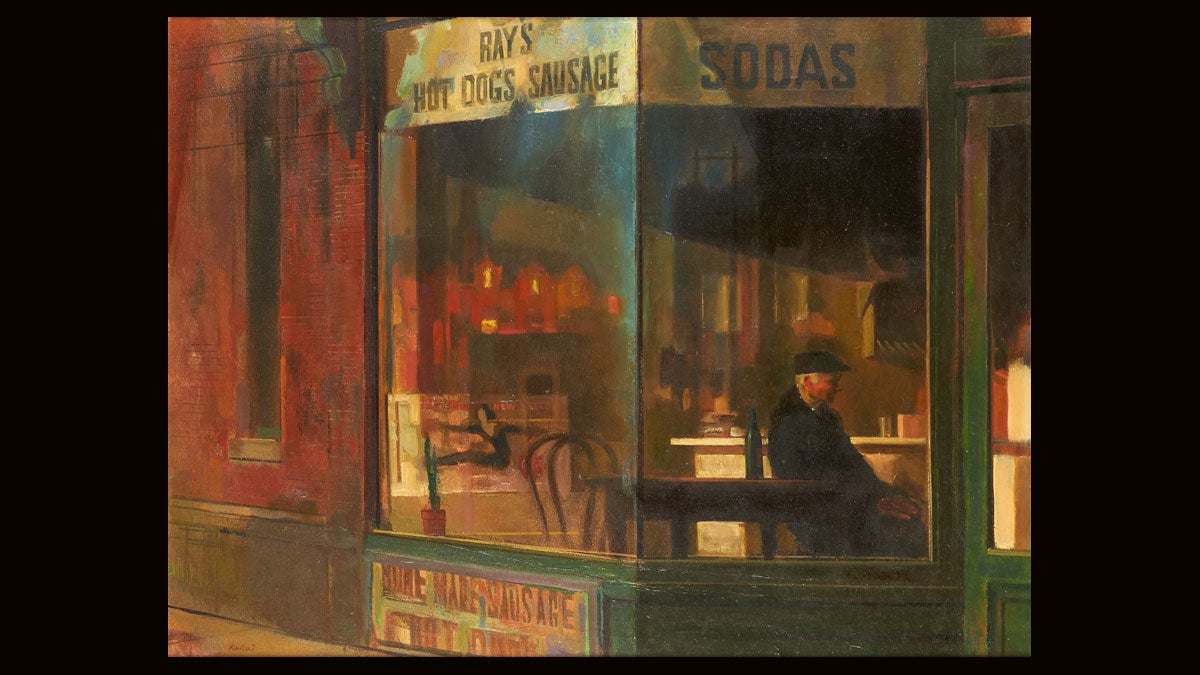Art from early 20th-Century Newark may change how you see New Jersey

Tables for Ladies, 1963, Adolf Konrad (1915 - 2003). Private Collection. Photo by John Wynn
Visitors to Newark in the past decade will have observed a resurgence of arts and culture, from the New Jersey Performing Arts Center and the Dodge Poetry Festival to Aljira and the many artists’ studios. But Newark has a long history of arts and culture, with its Beaux Arts, Art Deco and Moorish architecture housing such venerable institutions as the Newark Museum and Newark Symphony Hall. The relocation of tech companies like Audible has led some to call Newark the new Brooklyn.
Morven Museum & Garden is celebrating this rich heritage with Newark and the Culture of Art: 1900-1960, on view through January 28, 2018.Two major influences led to the creative culture of early 20th-century Newark: John Cotton Dana, the visionary figure who founded the Newark Museum, the earliest institution to give sustained support to the expression of modernism in America; and the legendary Newark School of Fine and Industrial Art, where the teachings of Arthur Wesley Dow, a leading spokesman for the new American art, held sway.
Dana’s goal was to educate by presenting examples of superior design to the greatest number of people, including Newark’s immigrant and working class population, making art a vital part of Newark culture and society. Through Dana’s efforts, art, industry and society were brought together through accessible design on everyday items, from the teacup to textiles. The exhibition includes paintings, weavings, ceramics, sculpture and ephemera.
Less than a year after artist John Marin’s debut exhibition at Alfred Stieglitz’s Gallery 291, the Newark Museum included Marin in an ambitious exhibition of paintings by “The Eight” — a seminal group of artists credited with creating a realistic, uniquely American style of painting. A year later, in 1911, the museum exhibited works by the Ashcan Painters John Sloan, William Glackens and George Bellows, and presented the first museum show of Stuart Davis, considered one of the state’s most talented artists of the time.”Just months after the Armory Show of 1913 — the recognized dawn of the American modern art movement — the Newark Museum presented the first museum exhibition of an American cubist painter, Max Weber,” writes Morven Curator of Collections and Exhibition Elizabeth Allan in the exhibition catalog. This was before New York’s Museum of Modern Art or Guggenheim existed. Weber had studied with Arthur Wesley Dow at Pratt, considering Dow “the greatest teacher I ever had.”
Dow taught him to see not things but relationships. Dow’s ideas were revolutionary for the period. He taught that rather than copying nature, art should be created by elements of the composition such as line, mass and color. Like Dana, Dow believed art was to be seen as a living force in everyday life for all, not a traditional ornament for the few. His synthesis of Eastern and Western art combined for the new American art. Among Dow’s students were Georgia O’Keeffe and Charles Sheeler.
Immigrants from Germany and Russia settled in Newark, drawn by acceptance and jobs for talented craftsmen in such industries as beer brewing. Some of these immigrants overflowed from Brooklyn and Staten Island, and many came to be with relatives.
To attract the entire population of the industrial city, inspiring beauty and quality, Dana focused on exhibiting local arts and products, according to Newark and the Culture of Art co-curator Roy Pedersen, who runs Pedersen Gallery in Lambertville. “To his thinking, a good museum was an institution of visual instruction that would display products of its own place and time and he chastised other museums for caring more about beautiful European objects than about the cultural expression within their own communities,” Pedersen writes in the catalog. “The worth of a museum should be measured by its public use, he felt, and not solely by the value of its collections of rare and beautiful objects.””People respond to regional art,” Pedersen says. “When you see an empty parking lot in Newark, or a junk man, through the eyes of an artist — something most people wouldn’t consider beautiful, but the artist sees in it something worthwhile — it’s transformational and changes the way you see. You’ll never see New Jersey the same way again. With an artist’s point of view, you’ll want to preserve what’s beautiful, whether stone houses in Bucks County or a street corner with lines of drying laundry in Newark.”
__________________________________________________
The Artful Blogger is written by Ilene Dube and offers a look inside the art world of the greater Princeton area. Ilene Dube is an award-winning arts writer and editor, as well as an artist, curator and activist for the arts.
WHYY is your source for fact-based, in-depth journalism and information. As a nonprofit organization, we rely on financial support from readers like you. Please give today.





